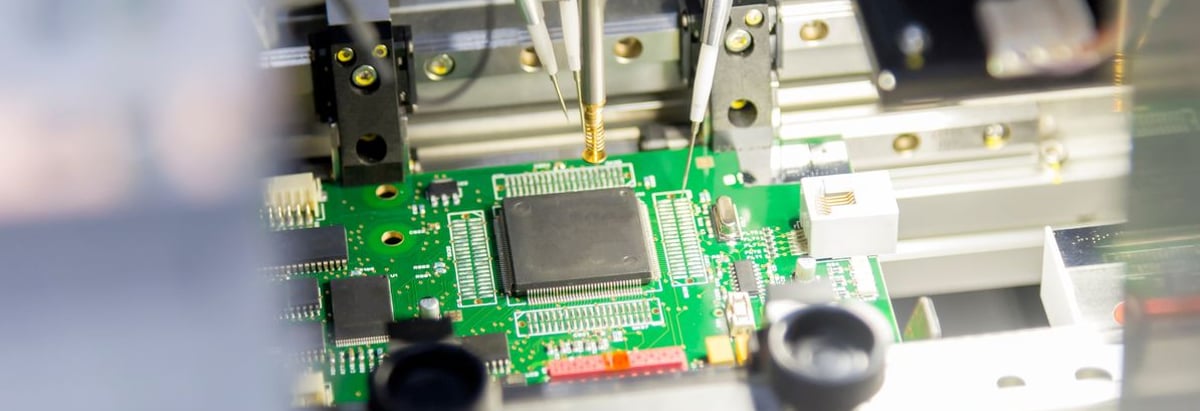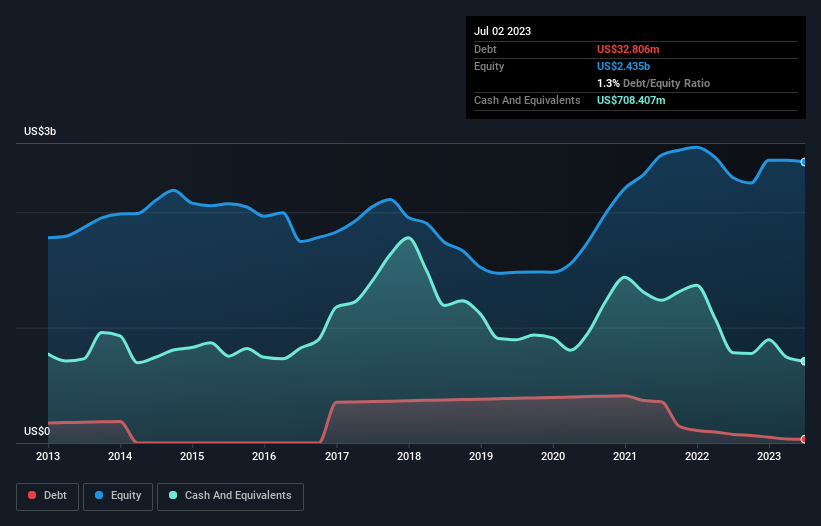
Warren Buffett famously said, 'Volatility is far from synonymous with risk.' So it might be obvious that you need to consider debt, when you think about how risky any given stock is, because too much debt can sink a company. As with many other companies Teradyne, Inc. (NASDAQ:TER) makes use of debt. But should shareholders be worried about its use of debt?
When Is Debt Dangerous?
Debt assists a business until the business has trouble paying it off, either with new capital or with free cash flow. Part and parcel of capitalism is the process of 'creative destruction' where failed businesses are mercilessly liquidated by their bankers. However, a more usual (but still expensive) situation is where a company must dilute shareholders at a cheap share price simply to get debt under control. By replacing dilution, though, debt can be an extremely good tool for businesses that need capital to invest in growth at high rates of return. When we think about a company's use of debt, we first look at cash and debt together.
See our latest analysis for Teradyne
What Is Teradyne's Net Debt?
The image below, which you can click on for greater detail, shows that Teradyne had debt of US$32.8m at the end of July 2023, a reduction from US$74.4m over a year. But it also has US$708.4m in cash to offset that, meaning it has US$675.6m net cash.

A Look At Teradyne's Liabilities
According to the last reported balance sheet, Teradyne had liabilities of US$669.8m due within 12 months, and liabilities of US$290.2m due beyond 12 months. Offsetting these obligations, it had cash of US$708.4m as well as receivables valued at US$493.2m due within 12 months. So it actually has US$241.6m more liquid assets than total liabilities.
This state of affairs indicates that Teradyne's balance sheet looks quite solid, as its total liabilities are just about equal to its liquid assets. So while it's hard to imagine that the US$15.3b company is struggling for cash, we still think it's worth monitoring its balance sheet. Succinctly put, Teradyne boasts net cash, so it's fair to say it does not have a heavy debt load!
The modesty of its debt load may become crucial for Teradyne if management cannot prevent a repeat of the 37% cut to EBIT over the last year. Falling earnings (if the trend continues) could eventually make even modest debt quite risky. When analysing debt levels, the balance sheet is the obvious place to start. But ultimately the future profitability of the business will decide if Teradyne can strengthen its balance sheet over time. So if you're focused on the future you can check out this free report showing analyst profit forecasts.
Finally, a company can only pay off debt with cold hard cash, not accounting profits. Teradyne may have net cash on the balance sheet, but it is still interesting to look at how well the business converts its earnings before interest and tax (EBIT) to free cash flow, because that will influence both its need for, and its capacity to manage debt. During the last three years, Teradyne produced sturdy free cash flow equating to 71% of its EBIT, about what we'd expect. This cold hard cash means it can reduce its debt when it wants to.
Summing Up
While we empathize with investors who find debt concerning, you should keep in mind that Teradyne has net cash of US$675.6m, as well as more liquid assets than liabilities. And it impressed us with free cash flow of US$463m, being 71% of its EBIT. So we don't have any problem with Teradyne's use of debt. Over time, share prices tend to follow earnings per share, so if you're interested in Teradyne, you may well want to click here to check an interactive graph of its earnings per share history.
Of course, if you're the type of investor who prefers buying stocks without the burden of debt, then don't hesitate to discover our exclusive list of net cash growth stocks, today.
Valuation is complex, but we're here to simplify it.
Discover if Teradyne might be undervalued or overvalued with our detailed analysis, featuring fair value estimates, potential risks, dividends, insider trades, and its financial condition.
Access Free AnalysisHave feedback on this article? Concerned about the content? Get in touch with us directly. Alternatively, email editorial-team (at) simplywallst.com.
This article by Simply Wall St is general in nature. We provide commentary based on historical data and analyst forecasts only using an unbiased methodology and our articles are not intended to be financial advice. It does not constitute a recommendation to buy or sell any stock, and does not take account of your objectives, or your financial situation. We aim to bring you long-term focused analysis driven by fundamental data. Note that our analysis may not factor in the latest price-sensitive company announcements or qualitative material. Simply Wall St has no position in any stocks mentioned.
About NasdaqGS:TER
Teradyne
Designs, develops, manufactures, and sells automated test systems and robotics products worldwide.
Flawless balance sheet with high growth potential.


